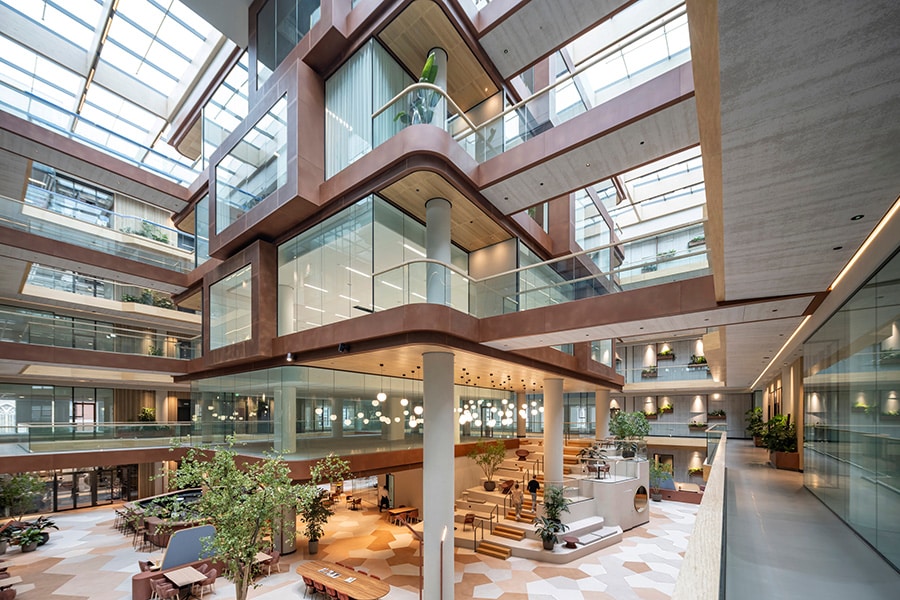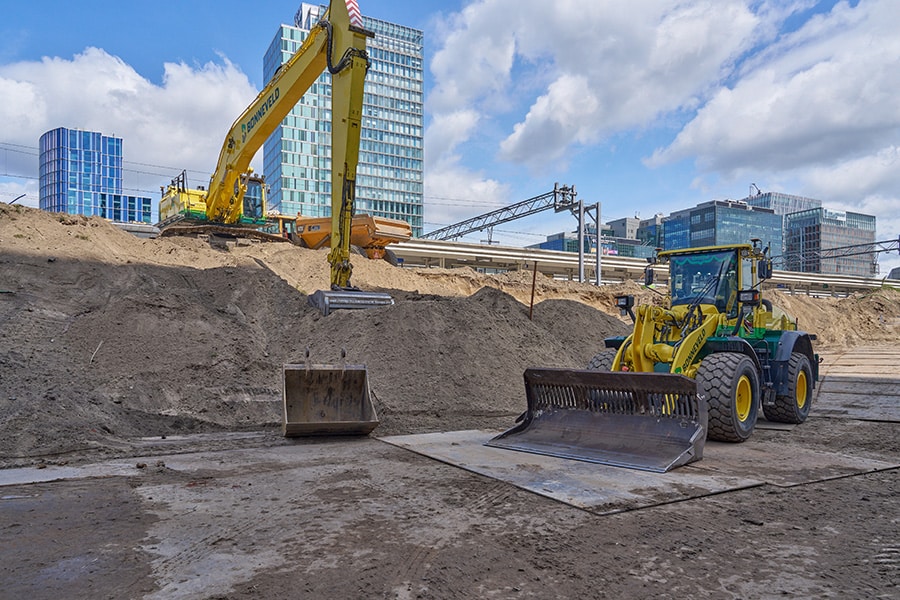
Some habits in public restrooms should not be broken
Don't forget Legionella: keep flushing regularly!
The current advice to work en masse from home, and to close public buildings to help prevent the spread of germs and bacteria, affects the dink water plant. It is extra important to keep maintenance going on these drinking water systems. Because when they are no longer or partially in use, bacteria can easily settle in the biofilm (a set of microorganisms that adhere to each other and to a surface in contact with water). And aside from the current situation, we must ensure that good hygiene habits are reinforced and continued in our public sanitation facilities in the future.

TEMPOMATIC 4 electronic sink faucet with automatic periodic flushing prevents water stagnation
Legionella: a public threat
Legionella bacteria cause Legionnaires' disease, a respiratory infection that affects people with chronic respiratory problems and those with weakened immune systems. The bacteria occurs naturally in water and develops where there is stagnant water and a source of nutrients, such as biofilm in pipes or rusted water storage tanks. The bacteria multiply at temperatures of 20-45°C and can be harmful when inhaled in aerosol form.
Schools, swimming pools, offices, airports and restaurants are examples of public buildings where the use of sanitary facilities is intensive. During times of vacation or prolonged closure, drinking water is (almost) not used, which can accelerate biofilm formation in the pipes.
Larger commercial buildings often have facility teams to create and implement a legionella prevention plan, but in smaller buildings the responsibility lies with the owners. In turn, they rely on local expertise to ensure their facility complies with regulations. The solutions are simple: prevent water from reaching temperatures where bacteria multiply* and limit water stagnation in the facility.

SECURITHERM electronic shower panel with anti-combustion safety
Keep rinsing is the message
It is mandatory in every public building to monitor the bacteriological quality of the water in the network, by regularly taking samples and performing analyses. Regarding the presence of Legionella in the water, additional tests should be performed when values of > 1,000 Colony Forming Units per liter (CFU/L) are measured and curative measures are initiated from 10,000 CFU/L.
Current regulations designate standing water in the plumbing system as conducive to bacterial growth. Therefore, the use of loop pipes, or closed circuits, is strongly recommended. Furthermore, the European standard NF EN 806-5 states that parts of the installation that are rarely used should be flushed regularly. The recommended interval is once a week. The German directive of April 2013, Hygiene in Trinkwasser-Installationen VDI/DVGW 6023, requires measures for changing water after more than 72 hours of interrupted use of the sanitary installation.
Drinking water companies therefore advise building managers to continue to properly implement their legionella prevention plan. Companies without a (mandatory) legionella prevention plan are also advised to flush out pipes properly before putting them back into use. This can be done by briefly opening all taps and letting the water flow quietly for a minute. However, manual flushing is labor intensive and costly, especially for larger installations.

Toilet system with direct flush TEMPOFLUX 3 does not require a cistern
Hot, hotter, hottest
The General Regulations for Tap Water Installations (NEN 1006) state that hot water should be produced at a maximum of 70°C, with a circulation water temperature of 60°C. At this temperature, 90% of the bacteria die within 2 minutes*. If the temperature falls below this guideline, the risk of bacterial growth increases.
Complex systems and long pipelines lead to temperature drops and increase the risk of contamination. To reduce this risk, minimize the length of tap lines. Pipe insulation prevents heat loss and, where cold and hot water pipes run side by side, insulation will stop heat transfer, preventing cold water temperatures from rising above 20°C and preventing Legionella bacteria from becoming inactive*.

BIOFIL filters provide a temporary solution when bacterial contamination occurs
Technical solutions in the fight against Legionella
DELABIE feels strongly about the control and prevention of bacterial growth and offers a wide range of technical solutions. For example, a central thermostat allows the building manager to maintain the prescribed temperatures in the network and ensure the safety of users. The thermostat should have an anti-fire safety feature that ensures that hot water is automatically and immediately shut off if cold water fails and vice versa.
In addition, choosing electronic faucets equipped with a periodic flush prevents water stagnation and thus bacterial growth. In fact, an automatic flush activates itself every 24 hours after the last use and flushes for 60 seconds. An anti-stagnation electrovalve, without a rubber membrane behind which a small amount of stagnant water always remains, is an additional advantage in the fight against bacterial growth.
Toilet systems with direct flushing are also specifically designed for public washrooms with a high frequency of visits. Because the flush is connected directly to the water mains, there is no reservoir of stagnant water, and therefore no limescale or accumulation of impurities, eliminating elements that promote bacterial growth.
Managing pollution
If contamination of the water is found due to prolonged plant closure, water filters at the tap point can be used as a temporary control measure until a permanent and safe solution is in place. BIOFIL antibacterial filters for specific use with a 2-month service life provide peace of mind for both building managers and users. Using innovative, hollow-fiber membrane technology to microfilter water, these filters have a large filter surface area for larger water volumes and high resistance to clogging, while still being very compact. These faucet water filters are available for both sink and shower faucets.
The importance of Legionella prevention has long been firmly on the public health agenda. Reducing the risk of Legionella contamination in public buildings presents specific challenges to user safety and system design. By understanding the risks and installing products specifically designed to address these challenges, the risk of contamination and scalding can be easily overcome.
*
| Temperature | Legionella formation |
| <20°C | Dormant |
| 24-45°C | Optimal multiplication |
| 50°C | 90% dies within 2 hours |
| 60°C | 90% dies within 5 minutes |
Source: Scientific and Technical Center for Construction (STCB: 2002)
Heeft u vragen over dit artikel, project of product?
Neem dan rechtstreeks contact op met Delabie.
 Contact opnemen
Contact opnemen



